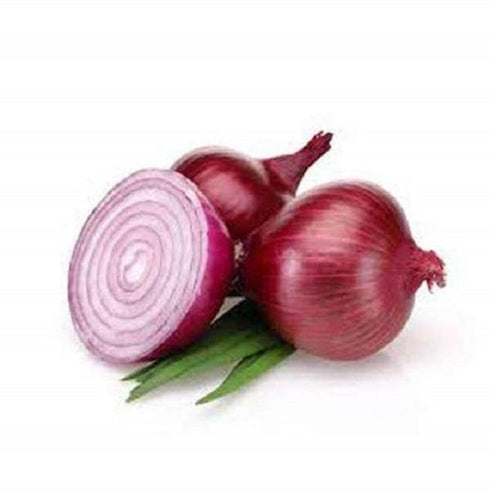- Home
- 2A. VEGETABLE SEEDS
- Red Onion (लाल प्याज) - Allium cepa - desi vegetable seeds

PRODUCT INFORMATION
CUSTOMER REVIEWS
PRODUCT INFORMATION
Onion is excellent for use in cooking, especially onions fresh from the garden. 1 Seed packet contains approximately 100 seeds.
Onions are a wonderful staple crop in our household.
If you follow a few simple steps, you can harvest a large number of high-quality onions from a small garden. Onions are such a versatile vegetable they feature in so many recipes, so growing your own onions means you always have them to hand. They are easy to grow from baby onions called sets. Although the seed is available, sets are the easiest and quickest way to grow onions. Sets are also are better in colder regions, and are less likely to be attacked by some pests and diseases.Seeds Specifications
| Seeds per Packet | 50 |
| Common Name | bulb onion or common onion, Allium cepa (Botanical Name) |
| Height | 2.5 to 6 feet. |
| Flower Colour | White |
| Bloom Time | Year-round |
| Difficulty Level | Easy |
Planting And Care
- Fertilize every few weeks with nitrogen to get big bulbs
- Cease fertilizing when the onions push the soil away and the bulbing process has started
- Do not put the soil back around the onions; the bulb needs to emerge above the soil
- Generally, onions do not need consistent watering if mulch is used
- About one inch of water per week (including rainwater) is sufficient
- If you want sweeter onions, water more
- Onions will look healthy even if they are bone dry, be sure to water during drought conditions
- Make sure soil is well-drained
- Mulch will help retain moisture and stifle weeds
- Cut or pull any onions that send up flower stalks.
Onion NP 53 Care
- Select a location with full sun where your onions would not be shaded by other plants
- Soil needs to be well-drained, loose, and rich in nitrogen; compact soil affects bulb development
- Till in aged manure or fertilizer the fall before planting
- Onions are heavy feeders and need constant nourishment to produce big bulbs
- At planting time, you can mix in some nitrogen fertilizer, too, and side dress every few weeks until the bulbing process begins
- Seeding? Onion seeds are short-lived
- If planting seeds indoors, start with fresh seeds each year
- Start seeds indoors about 6 weeks before transplanting
- Plant onions as soon as the ground can be worked in the spring, usually late March or April
- Make sure temperature does not go below 20 degrees F
- For sets or transplants, plant the smaller sets 1 inch deep, with 4 to 5 inches between each plant and in rows 12 to 18 inches apart
- Think of onions as a leaf crop, not a root crop
- When planting onion sets, do not bury them more than one inch under the soil; if more than the bottom third of the bulb is underground, bulb growth can be restricted
| Sunlight | Select a location with full sun where your onions will not be shaded by other plants. |
| Watering | Generally, onions do not need consistent watering if mulch is used. About one inch of water per week (including rainwater) is sufficient. If you want sweeter onions, water more. |
| Soil | Soil needs to be well-drained, loose, and rich in nitrogen; compact soil affects bulb development. |
| Temperature | 20 degrees F |
| Fertilizer | Give an occasional feed with a general liquid fertilizer. A light feed of sulfate of potash in June will help ripen the bulbs ready for storage. |
| Harvest Season |
|
Onion NP 53 Special Feature
Onions are a cold-season crop, easy to grow because of their hardiness.
Culinary Use:
- In foods, onion is used in many recipes
CUSTOMER REVIEWS
